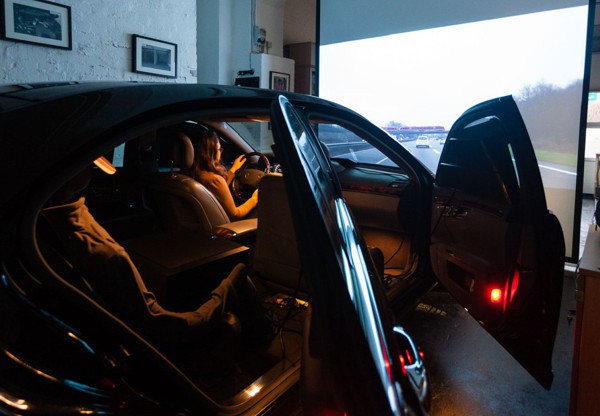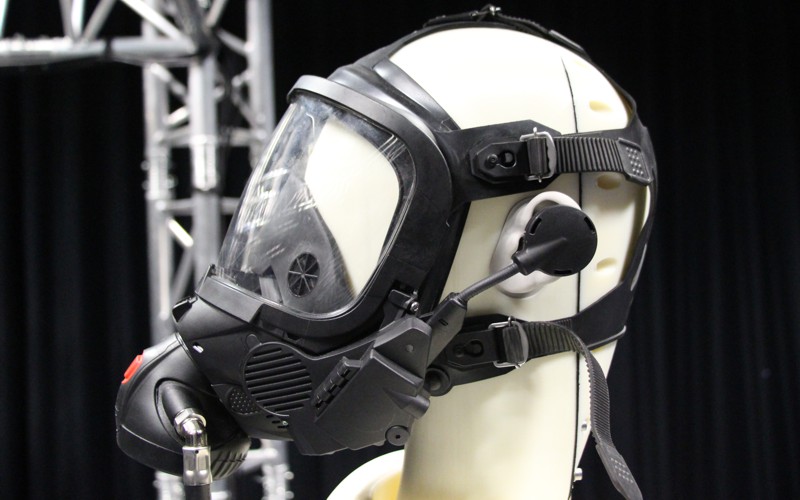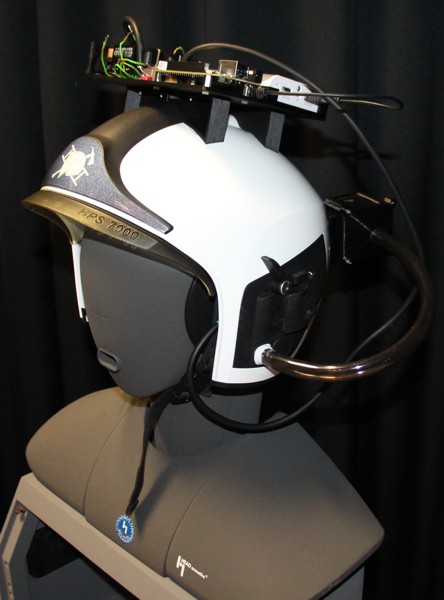Breathing Protection Masks
 |
||
| Contents: | ||
 Full-face masks are essential for firefighters to ensure respiratory protection in smoke diving incidents and toxic environments. While the masks protect the firefighters in terms of clean air supply, voice communication is impeded at the same time. For that reason so-called communication units have been added to conventional masks. These units consist of microphones inside the communication unit which is in front of themask for recording the voices of firefighters, signal processing for enhancing the recorded speech, as well as amplifiers and loudspeakers (attached to the outside of the mask) for playing back the enhanced signals. This improves the communication between firefighters and, e.g., civilians that should be rescued.
Full-face masks are essential for firefighters to ensure respiratory protection in smoke diving incidents and toxic environments. While the masks protect the firefighters in terms of clean air supply, voice communication is impeded at the same time. For that reason so-called communication units have been added to conventional masks. These units consist of microphones inside the communication unit which is in front of themask for recording the voices of firefighters, signal processing for enhancing the recorded speech, as well as amplifiers and loudspeakers (attached to the outside of the mask) for playing back the enhanced signals. This improves the communication between firefighters and, e.g., civilians that should be rescued.
Furthermore, firefighters usually act in small teams. Thus, (team) communication is important for efficient operation. For this kind of communication the above mentioned electro-acoustic enhancement helps only if the firefighters would operate only within small distances between each other. A better way is to use so-called team radio. Here, the voice of each firefighter is transmitted (after appropriate signal enhancement)wirelessly via an internal radio system to surrounding communication units. After decoding, the signals are played back via loudspeakers that are attached close to the ears of the firefighters. Thus, a low-range radio with automatic connecting and disconnecting features has been developed.
 In addition to the team-radio connection a second wireless connection can be used by firefighters: the so-called tactical radio. Here, an external radio device is utilized, e.g. based on the TETRA standard. This second radio link is typically used for communication with the coordinating person of the operation, e.g. for calling ambulances or organizing additional support.
In addition to the team-radio connection a second wireless connection can be used by firefighters: the so-called tactical radio. Here, an external radio device is utilized, e.g. based on the TETRA standard. This second radio link is typically used for communication with the coordinating person of the operation, e.g. for calling ambulances or organizing additional support.
For achieving good communication a variety of hardware and signal processing algorithms is necessary. This includes the microphones used for recording the signals of firefighters, noise reduction techniques that should, for example, reduce so-called breathing noise, or loudspeakers and corresponding amplifiers that are able to operate with limited energy resources. Thus, such communication systems are comparable in some sense to hands-free telephones, public address systems, hearing-aids, or in-car communication systems. In contrast to the before mentioned applications the evaluation of full-face masks is, however, not done in the same detail. Therefore, we focus also on the development of appropriate automatic evaluation systems for breathing protection masks.
In addition to improvements for the communication of fire fighters we also focus in the reduction of environmental noise. Therefore, we equip the helmet of firefighters with so-called error microphones (sensors close to the ears) and anti-noise loudspeakers (speakers close to the ears) and try to reduce the noise using active noise control approaches.
Corresponding Publications
M. Brodersen, A. Volmer, G. Schmidt: Signal Enhancement for Communication Systems Used by Firefighter, EURASIP Journal on Audio, Speech, and Music Processing, vol. 21, pp. 1 - 19, 2019
T. Hübschen, A. Wilbrandt, M. Brodersen, G. Schmidt: Sprachsignalentzerrung für einen Kunstkopf mit zeitveränderlichem Resonanzvolumen, Proc. DAGA, Germany, 2019
C. Marquard, C. Baasch, M. Brodersen, O. Niebuhr, and G. Schmidt: Speech, Think, Act: A Phonetic Analysis of the Combinatorial Effects of Respiratory Mask, Physical and Cognitive Stress on Phonation and Articulation, Proc. DAGA, Kiel, Germany, 2017
M. Brodersen, B. Gröger, and G. Schmidt: Verbesserung der Sprachverständlichkeit für Atemschutzmasken mittels Signalbearbeitung mit nichtlinearen Kennlinien, Proc. DAGA, Kiel, Germany, 2017
M. Brodersen, T. M. Jüngling, G. Schmidt: Evaluation of Communication Systems for Full-Face Firefighter Masks, ITG Speech, October 2016
M. Brodersen, A. Volmer, M. Romba, G. Schmidt: Sprachaktivitätserkennung mittels eines Mustererkenners für Atemschutzmasken, Proc. DAGA 2015, March 16-19, 2015, Nuremberg, Germany

 On behalf of the members of the Chair of Digital Signal Processing and System Theory, we would like to take this opportunity to wish you all a very Merry Christmas and a peaceful, restful winter break. We hope that this festive season brings you joy, relaxation, and cherished moments with your loved ones.
On behalf of the members of the Chair of Digital Signal Processing and System Theory, we would like to take this opportunity to wish you all a very Merry Christmas and a peaceful, restful winter break. We hope that this festive season brings you joy, relaxation, and cherished moments with your loved ones.